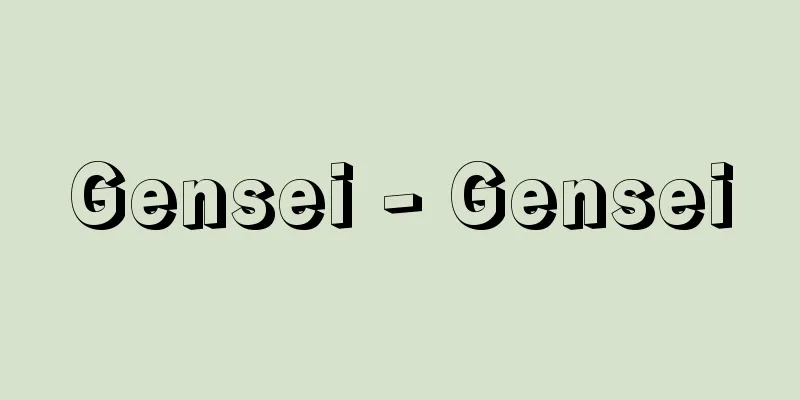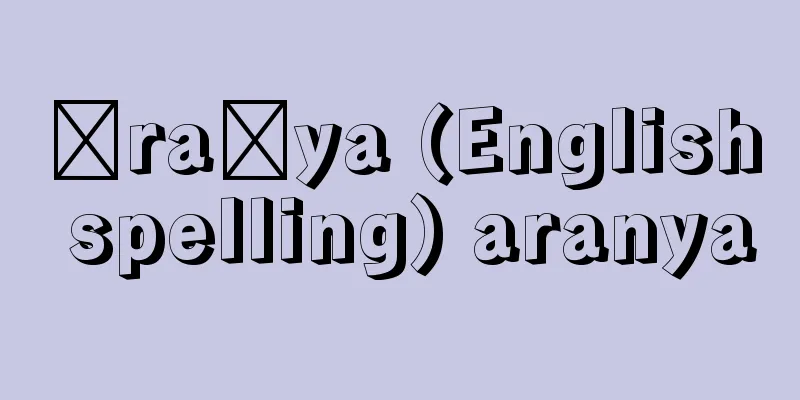Gensei - Gensei

|
He was a Nichiren sect priest in the early Edo period, a poet and a poet of Chinese poetry. He was born in Kyoto. His secular surname was Ishii. His given name was Motomasa. He was commonly known as Yoshibei. He became a monk and took the Buddhist name Nissei. His father, Ishii Motoyoshi, was from a family of low-ranking government officials, and served at Kajiinomiya. He later became a vassal of Mori Terumoto, but retired from service and lived in Kyoto. At the age of 13, Motomasa served Ii Naotaka, the lord of Hikone Domain in Omi, but at the age of 26, he retired from service, became a monk, and practiced Buddhism. He was a scholarly monk, but was also famous as a man of letters. He is praised on a par with Ishikawa Jozan in Chinese poetry. His collection of Chinese poetry and prose is called Sozanshu. He was on friendly terms with the Ming Dynasty man Chin Yuanpin, and published the "Gan Gen Shou Washu." He was a disciple of Matsunaga Teitoku, and his family anthology of waka poetry was the "Kusayama Wakashu." His style of poetry was simple and clear. He has written many books and revised editions, including the "Minobu no Michi no Ki" in Japanese and the "Fuso Initsuden" in Chinese. His residence, Shoshin-an in Fukakusa, Kyoto, became Zuiko-ji Temple, and Motomasa's grave is famously known as the "Grave of the Three Bamboo Pole." [Munemasa Iso-o July 19, 2017] Only the dog's tracks can be seen as the snow falls, making winter in Fukakusa even more lonely. "Fukakusa Genseishu, 4 volumes (1978, Classic Library)" ▽ "Munemasa Isoo, "Gensei - His Origin" (included in "Research on the Japanese Early Modern Bunen", 1977, Miraisha)" [Reference items] | | |Source: Shogakukan Encyclopedia Nipponica About Encyclopedia Nipponica Information | Legend |
|
江戸前期の日蓮(にちれん)宗の僧侶(そうりょ)で漢詩文家、歌人。京都に出生。俗姓石井氏。元政はその名。通称吉兵衛。出家して法名日政。父石井元好(いしいもとよし)は地下(じげ)官人の家柄で、梶井宮(かじいのみや)に出仕し、のち毛利輝元(もうりてるもと)の家臣となったが、仕えを退き京都に住む。元政は13歳で近江(おうみ)彦根(ひこね)藩主井伊直孝(いいなおたか)に出仕したが、26歳で仕えを退き、出家し仏道を修行した。学僧であるが、文学者として有名。漢詩では石川丈山(いしかわじょうざん)と並び称せられる。漢詩文集に『草山集(そうざんしゅう)』がある。明(みん)人、陳元贇(ちんげんぴん)と親交があり『元元唱和集』の刊本がある。和歌は松永貞徳(まつながていとく)の門人で、家集に『草山和歌集』がある。歌風は平明。和文では『身延道(みのぶのみち)の記』、漢文では『扶桑隠逸伝(ふそういんいつでん)』など多くの著書、校訂本がある。その京都・深草の住居称心庵は瑞光寺(ずいこうじ)となり、元政の墓は「三竿竹(さんかんちく)の墓」とよばれ有名。 [宗政五十緒 2017年7月19日] 里(さと)の犬のあとのみ見えて降る雪もいとど深草冬ぞさびしき 『『深草元政集』全4巻(1978・古典文庫)』▽『宗政五十緒著「元政――その出自」(『日本近世文苑の研究』所収・1977・未来社)』 [参照項目] | | |出典 小学館 日本大百科全書(ニッポニカ)日本大百科全書(ニッポニカ)について 情報 | 凡例 |
Recommend
Izumin - Izumin
〘noun〙① A person who lives in seclusion away from ...
Side verse - Wakiku
A term used in Renga and Haikai. In Renga and Haik...
Whisker - hoisukaa (English spelling) whisker
A needle-like crystal, also called a whisker or w...
Ookubo Shibutsu - Ookubo Shibutsu
A Chinese poet of the late Edo period. His given ...
Ice fall - Ice fall (English spelling)
A section of a glacier that flows down steeply li...
mutant
Mutants are those that have evolved in ways that d...
Nominal money - Myo-mokukin
A type of financial system in the Edo period. Also...
《Titurel》 (English spelling)
...His works include three epics and eight lyric ...
Dainichi - Day
[1] (also "Tainichi") is an abbreviation...
Sagami Bay - Sagami Bay
This refers to the sea area between a line that r...
Sunbittern - Sunbittern
A bird of the family Satyridae in the order Grui. ...
Ramphastos toco (English spelling)
…About 37 species are distributed from Mexico to ...
Jørgensen, SM
For example, CoCl 3 and NH 3 each satisfy the usu...
Wind and waves
〘Noun〙① Wind and waves. Especially strong winds an...
Takahashi Finance
Takahashi Korekiyo served as finance minister in ...





![Shiroyama [town] - Shiroyama](/upload/images/67cbe73d5af52.webp)



